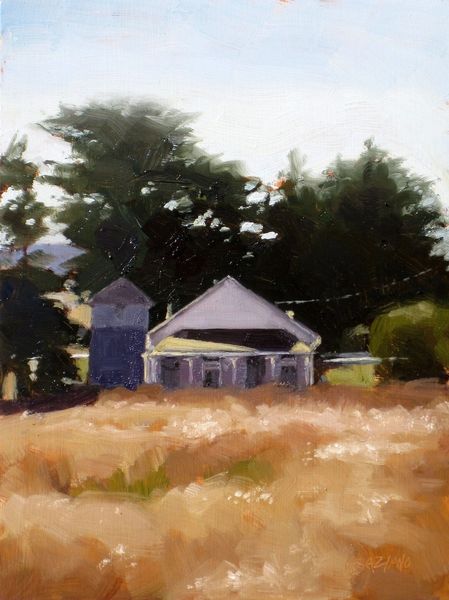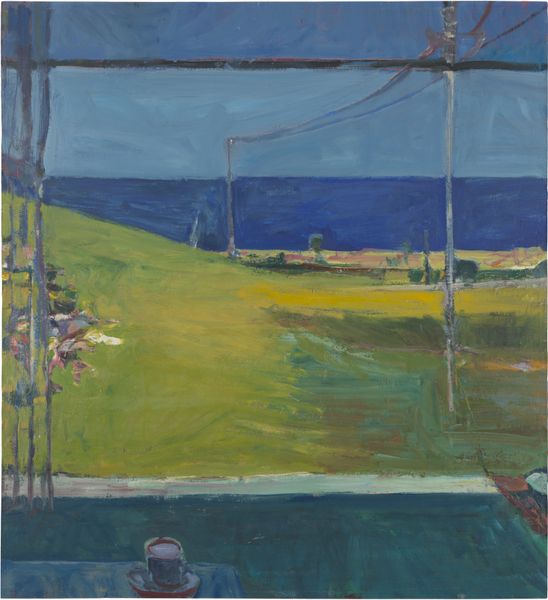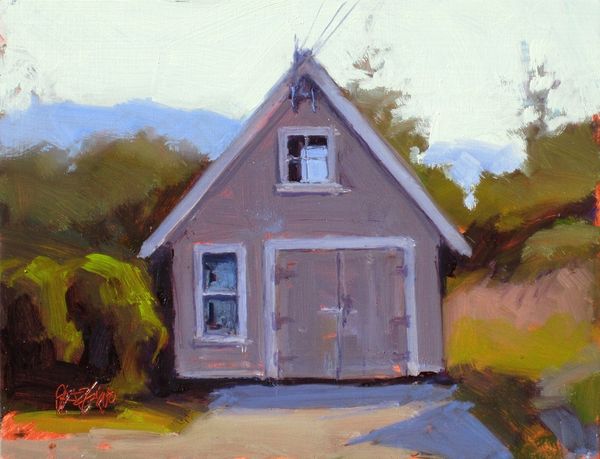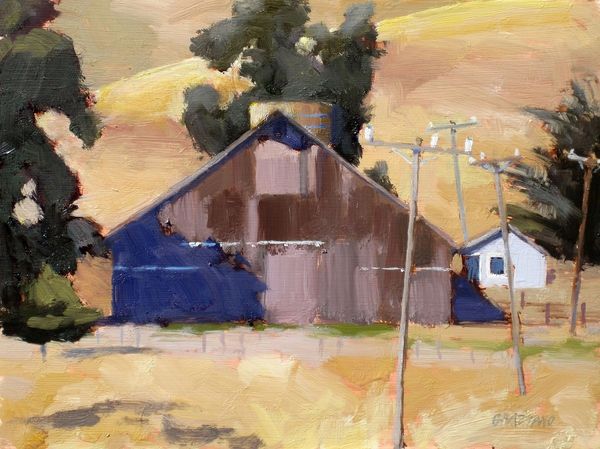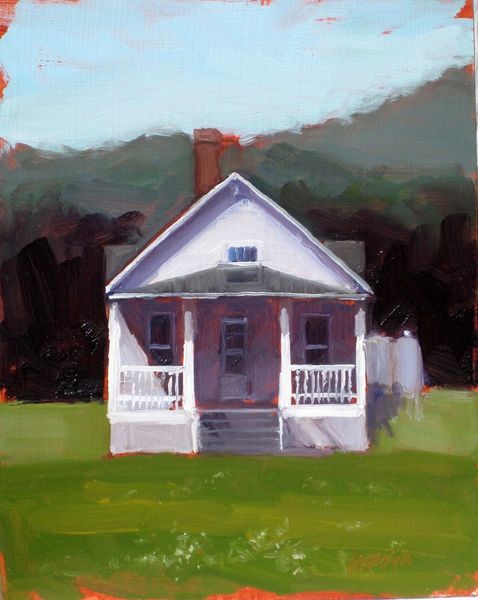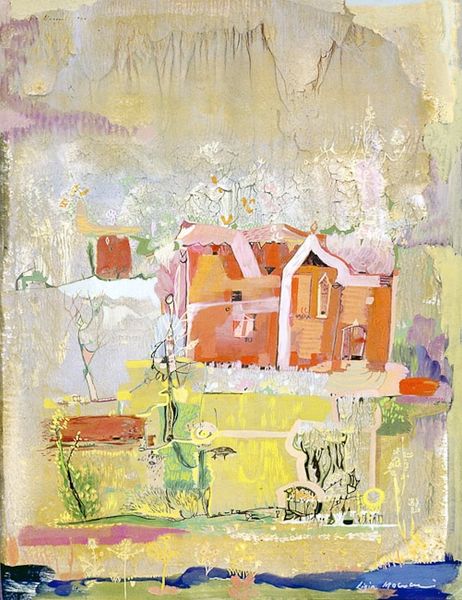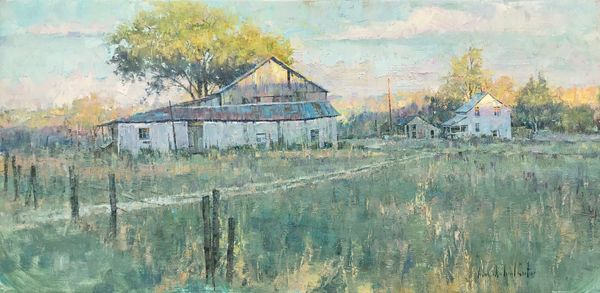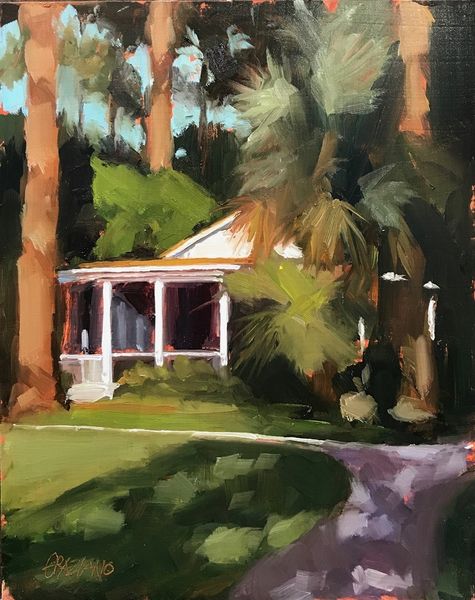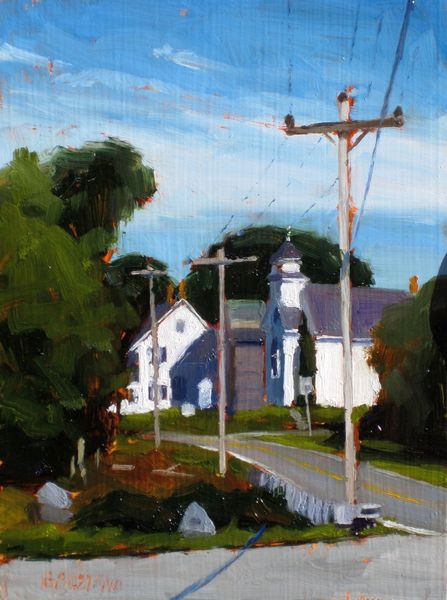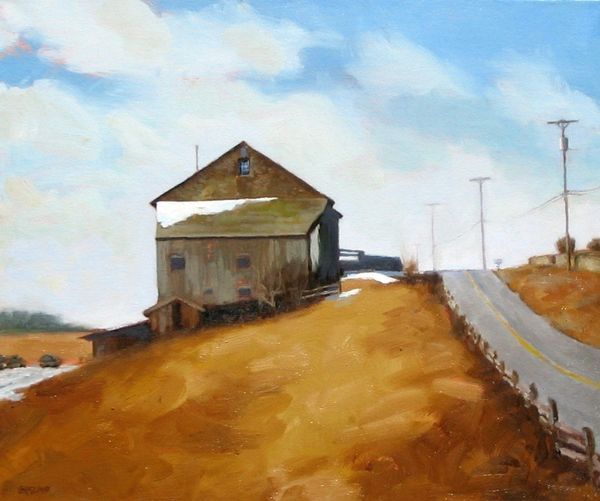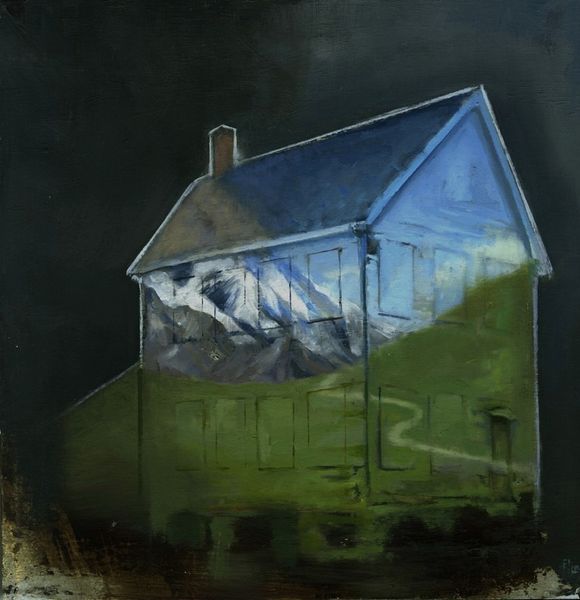
painting, oil-paint
#
contemporary
#
painting
#
oil-paint
#
landscape
#
oil painting
#
geometric-abstraction
#
cityscape
#
realism
Copyright: Modern Artists: Artvee
Curator: Joshua Flint’s 2016 painting, "Animal Territory," compels us to reconsider notions of place and identity within a disorienting landscape. Editor: It gives me a sense of unease, honestly. There's a lack of clarity, an almost dreamlike distortion to the familiar form of a building. The color palette is muted and murky, heightening the feeling that something is off-kilter. Curator: Exactly, and this disquieting effect is crucial. Flint challenges conventional perspectives, probing the socio-political concept of ‘territory’ beyond simple geographical boundaries. Consider, for instance, who is granted the privilege to define and inhabit particular spaces, and whose experiences are marginalized in the process. Editor: I see what you mean. Even the way the architecture seems to blend into the natural world, like the forest is reclaiming it, can be interpreted symbolically. What does it say about humankind’s tenuous grasp on the spaces we’ve created? Perhaps a loss of control? Curator: Precisely. Look closely, and you'll note the interplay between realism and abstraction, how certain architectural details appear while others vanish. This artistic technique mirrors the ambiguities inherent in any concept of shared or contested space and its influence on our socio-economic interactions. The artist deftly explores intersectional themes by evoking how personal and cultural backgrounds shape experiences. Editor: The blue squares offer a visual clue; is that the sky reflected? It’s an unsettling touch; even nature seems fragmented and discordant. Perhaps pointing toward a kind of lost symbiosis. This disrupted reflection also pulls you back to question everything else within the canvas; nothing feels solid, and you become ever-present as an interpreter of the work. Curator: Indeed, Flint refuses to provide us with any easy answers, encouraging active engagement with pressing sociopolitical problems. This prompts vital discussions regarding inclusivity, access, and the equitable redistribution of resources within our contemporary world. Editor: It leaves me pondering the fragile agreement we have with both our surroundings and with one another. The work’s symbolism hints at a deeper, underlying vulnerability. Curator: This piece underscores how visual language becomes an effective tool in exploring complex questions regarding social dynamics and the impact on lived experience. Editor: Yes, and ultimately a catalyst for essential, on-going social introspection.
Comments
No comments
Be the first to comment and join the conversation on the ultimate creative platform.
